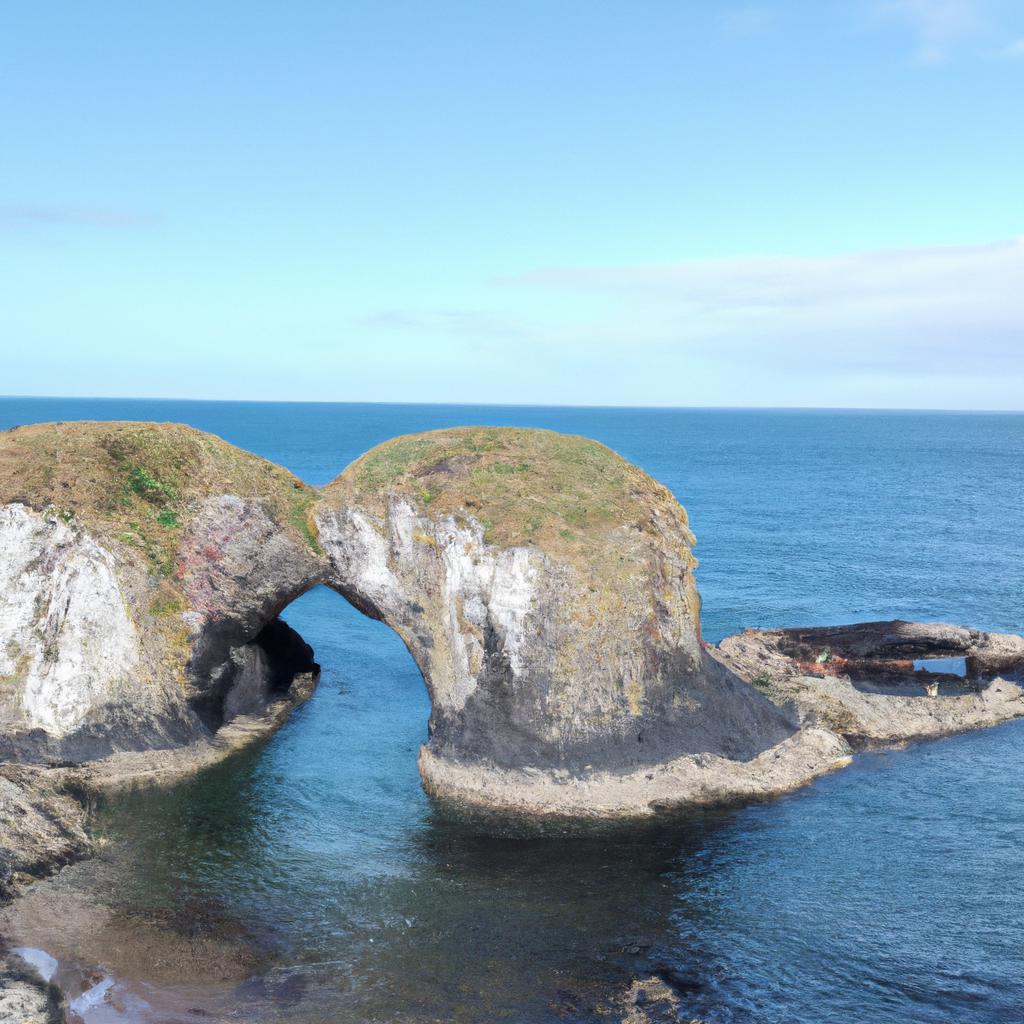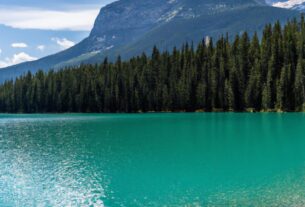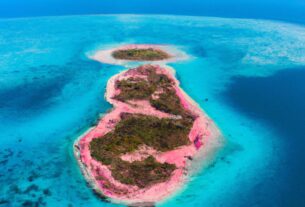When we think of Northern Ireland, we often imagine its stunning countryside, rugged coastline, and bustling cities. However, few people realize that Northern Ireland is home to some of the most unique and awe-inspiring rock formations in the world. These rocks not only contribute to the region’s beauty but also play a crucial role in its geological history.
The Three Major Types of Rocks in Northern Ireland
The rocky terrain of Northern Ireland is composed of three major types of rocks: igneous, sedimentary, and metamorphic. Each type has its unique characteristics and geological significance.
Igneous rocks
Igneous rocks form from the solidification of magma or lava. In Northern Ireland, basalt and granite are the most common types. Basalt, typically dark in color, is formed from rapidly cooling lava. It can be found in the famous basalt columns of the Giant’s Causeway. Granite, on the other hand, is formed from slowly cooling magma and is light in color. The Mourne Mountains, a popular destination for hikers and climbers, showcase these beautiful granite formations.
Sedimentary rocks
Sedimentary rocks are formed from the accumulation of sediment and organic matter. In Northern Ireland, limestone and sandstone are prevalent. Limestone, formed from calcium carbonate accumulation, is often used as a building material. Sandstone, formed from sand particles, can be found along the coast of Northern Ireland.
Metamorphic rocks
Metamorphic rocks are formed from the transformation of other rock types through intense heat and pressure. In Northern Ireland, schist and gneiss are the most common types. Schist, formed from the metamorphism of shale, is characterized by its shiny, layered appearance. Gneiss, formed from the metamorphism of granite, has a banded appearance.
Each type of rock in Northern Ireland has its unique characteristics and plays an essential role in the region’s geology. Understanding these different types of rocks is crucial to appreciating the geological marvel that is Northern Ireland’s rocky terrain.
Popular Rock Formations in Northern Ireland
Northern Ireland boasts several popular rock formations that showcase the region’s geological diversity and captivate visitors with their beauty.
Giant’s Causeway
The Giant’s Causeway is a natural wonder consisting of over 40,000 interlocking basalt columns. This unique formation, created around 60 million years ago by volcanic activity, is a UNESCO World Heritage Site. Legend has it that the causeway was built by the Irish giant Fionn MacCumhail to challenge his Scottish rival Benandonner. Today, it attracts millions of visitors each year.
Marble Arch Caves
Located in County Fermanagh, the Marble Arch Caves are a network of underground caves and waterways formed over thousands of years by water’s eroding action on limestone. These caves house various geological formations, including stalagmites, stalactites, and underground rivers. Guided tours allow visitors to explore the stunning natural beauty hidden beneath the surface.
Mourne Mountains
The Mourne Mountains dominate the landscape of County Down. Composed of granite, these mountains are the highest in Northern Ireland, with peaks reaching 850 meters. Formed around 60 million years ago through volcanic activity, they have been shaped by glaciation and erosion. The Mourne Mountains attract hikers with their breathtaking views of the surrounding countryside.
Slieve League
Slieve League, also known as Sliabh Liag, is a mountain located in County Donegal. Composed of quartzite, a type of metamorphic rock, it overlooks the Atlantic Ocean and boasts one of the highest sea cliffs in Europe, standing over 600 meters tall. Visitors can enjoy scenic drives to the top and immerse themselves in the area’s history and ancient ruins.
Geological Significance of Northern Ireland’s Rocks
Northern Ireland’s rocks hold significant geological importance, offering insights into the region’s landscape formation and historical development.
Formation of Northern Ireland’s Landscape
The rocks in Northern Ireland are a testimony to the region’s geological history shaped by tectonic activity, volcanic eruptions, glaciation, and erosion. The Giant’s Causeway, for example, originated from volcanic activity over 60 million years ago. The Mourne Mountains were formed through granite intrusions during the Caledonian orogeny.
Historical Significance of Rocks in Northern Ireland
The rocks in Northern Ireland bear cultural and historical significance. They have been used for centuries to construct churches, castles, and other structures that stand to this day. Basalt rocks from the Giant’s Causeway were utilized in building the Causeway Coast railway in the 19th century. Additionally, Northern Ireland’s rocks have inspired the creation of traditional Irish jewelry.
Economic Importance of Rocks in Northern Ireland
The rocks in Northern Ireland hold economic importance due to the presence of various minerals like zinc, lead, and copper, which have been mined for centuries. These minerals contribute to the region’s economy, create job opportunities, and aid in infrastructure development.
In conclusion, Northern Ireland’s rocks hold immense geological, cultural, and economic significance. They tell the story of the region’s geological history and provide insight into the changes that have occurred over millions of years. These rocks are not just visually stunning but also a source of wealth and pride for the people of Northern Ireland.
Activities Involving Rocks in Northern Ireland
For adventure seekers and rock enthusiasts, Northern Ireland’s rocky terrain offers an array of activities to satisfy their adrenaline cravings.
Rock Climbing
Northern Ireland’s rugged coastline and mountainous regions make it an ideal destination for rock climbing enthusiasts. The Mourne Mountains offer a range of climbing experiences, from gentle ascents for beginners to challenging routes for the more experienced climber. The basalt columns of the Giant’s Causeway provide a unique climbing experience that attracts climbers from around the world.
Geology Tours
Geology tours are available for those interested in the geological history of Northern Ireland. Led by experienced guides, these tours provide an in-depth look at the region’s rocks and formations, taking visitors on a journey through the ages and exploring the various geological processes that have shaped the landscape over millions of years.
Fossil Hunting
Northern Ireland is home to significant fossil discoveries. The region’s rocks have preserved a wide range of fossils, from ancient trilobites to early fish and plants. Guided fossil hunting tours allow participants to discover the rich diversity of life that once inhabited Northern Ireland’s seas and shores.
In conclusion, Northern Ireland’s rocky terrain offers a wealth of activities for adventure seekers and rock enthusiasts alike. Whether you’re a seasoned climber, a budding geologist, or a fossil hunting enthusiast, there’s something for everyone to enjoy. So, pack your hiking boots and head out to explore the wonders of Northern Ireland’s rocks.
Unveiling the Beauty of Northern Ireland’s Rocks
Northern Ireland’s rocky terrain is a geological marvel that stands out for its unique beauty and historical significance. The rocks have been shaped over millions of years through various geological processes, leaving behind a landscape that is both breathtaking and informative.
From the iconic Giant’s Causeway to the majestic Mourne Mountains, Northern Ireland’s rock formations are a testament to the power and beauty of nature. They not only add to the region’s charm but also play an essential role in its culture and economy. These rocks provide habitats for various flora and fauna and attract tourists from all over the world, boosting the region’s tourism industry.
Exploring Northern Ireland’s rocky terrain is an adventure that should not be missed. Whether you’re a geology enthusiast or just looking for a unique travel experience, Northern Ireland’s rocks offer something for everyone. You can hike through the Mourne Mountains, go rock climbing in the Fermanagh Lakelands, or take a geology tour of the Giant’s Causeway.
At TooLacks, we are committed to bringing you the latest news and information on all things nature, gardening, and animals. We hope this article has piqued your interest in Northern Ireland’s rocky terrain and inspired you to embark on your own journey of discovery. So, what are you waiting for? Pack your bags and get ready to unveil the beauty of Northern Ireland’s rocks.



